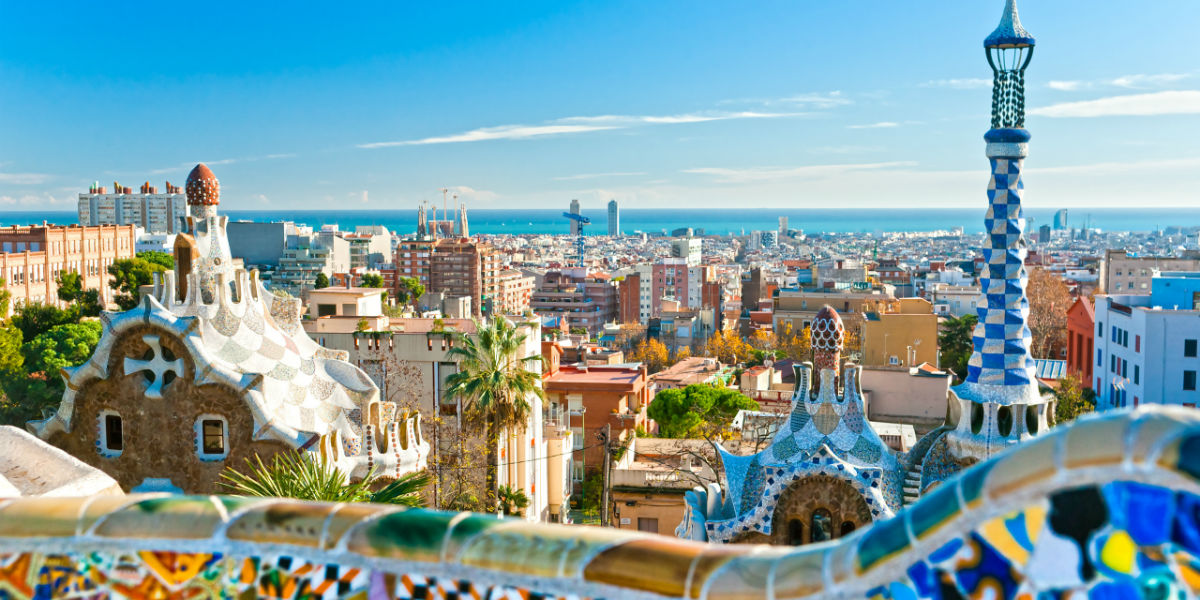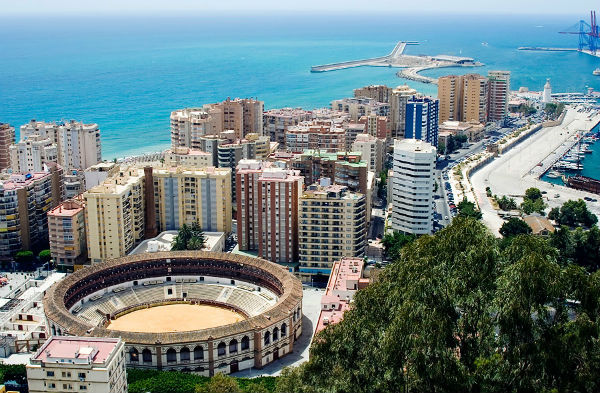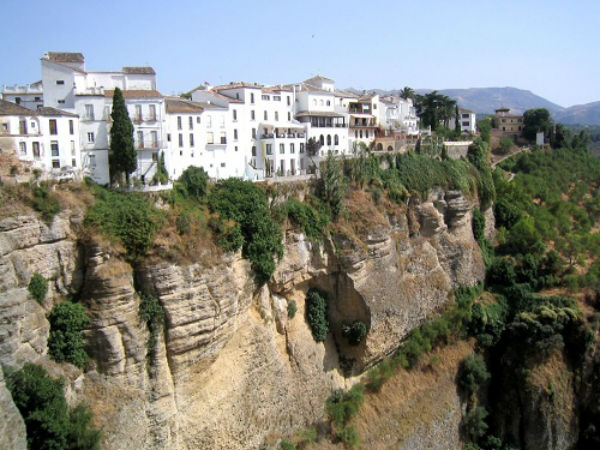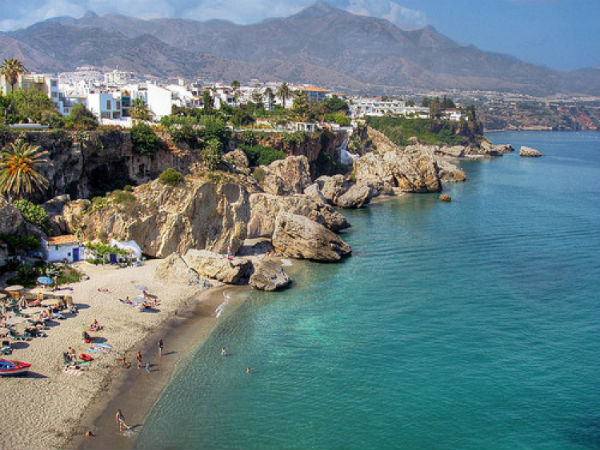Malaga is the second largest city of Andalusia and the main town on the Costa del Sol. Today, as in the days of the Phoenicians, Romans and Moors, Malaga remains as a thriving port. The city lies on a long and narrow strip of land clamped between the sea and the mountains.
Malaga was founded by the Phoenicians around 1100 BC and became the most important port of the Roman Empire in the III century BC. Furthermore, the city was conquered by the Arabs in the VIII century and became an important economic center of the Caliphate. And only in the XV century Castilian troops conquered Malaga and joined it to Castile.
In the XIX century sweet “Malaga” wine was one of the most popular drinks in Europe. However, in 1876 the vineyards of region were heavily damaged by phylloxera and wine production immediately decreased. But today Malaga is famous for its wines and olive oil again.
Today Malaga is a thriving resort town with picturesque landscapes, comfortable and attractive beaches and plenty of hotels on the Mediterranean coast. Malaga attracts tourists with its extraordinary scenery, warm climate, beautiful beaches and rich history.
Malaga coast abounds with a variety of cafes and restaurants offering Mediterranean cuisine, especially including fish. For young people in Malaga there are many discos and nightclubs, so the fun does not cease here around the clock.
A visit to Malaga becomes especially memorable during the various holidays:
– Holy Week (the earlier Catholic Easter holiday) in Malaga relates to the holidays of international scale (since 1965).
– Feast of Carmen (La Festividad de Nuestra Senora del Carmen), the saint patron of sailors, is celebrated on 16 July.
– Traditional Feria (Fair) begins on the second Friday of August and lasts for 9 days until the next Sunday. Initially the Event Center is located in the historic center of Malaga moving to the city suburbs by the evening.
– Feast of the Virgin of Victory (Virgen de la Victoria) – in honor of the saint patron of the city (8 September).
At 8 km from the city there is the international airport of El Rompediso.
Beaches of Malaga:
The coastline has an excellent geographical position: protected from the north winds by mountain ranges, with total 300 days of sunshine a year!
Beaches of Malaga (especially those located in the western part of the coast) are renowned for clear waters and sand while the eastern part is dominated by a rocky beach with a plenty of rocks.
The Malaga beaches are long and wide with an average gradient. El Kandado (El Candado), Las Akasiyas (Las Acacias), Caleta, San Julian, El Palo, Pedregalejo, Baños del Carmen, La Malagueta (La Malagueta), San Andres (San Andres), Misericordia ( La Misericordia), Guadalorse and Guadalmar beaches are stretching from east to west.
The city is making great efforts aimed at restoration and cleaning of Malaga beaches as well as improving the urban infrastructure. As a result, the Malagueta beach reaches 60 m in width and 2500 m length now! A large number of blue flags issued by the European Union is the best guarantee of high quality of Malaga beaches. For fans of sunbathing without swimsuits there is a special, clearly marked, nudist beach area (Guadalmar).
Places of interest in Malaga
The Cathedral. Construction of the cathedral began in 1528 by the architects Diego de Siloe and Diego Vergara. The building is a bizarre mix of architectural styles. One tower remains unfinished (due to lack of funds) so the Cathedral is generally called “La Mankita” (“One-handed”).
You can see beautiful sculptures by Pedro de Mena in the cathedral. The famous Spanish painter Alonso Cano participated in the painting of the altar and three magnificent chapels of the Cathedral.
A visit the Cathedral can take place in the morning from 9 am to 12 at noon and in the evening from 4 pm to 6 pm. Museum of Fine Arts (Musso de Baie lyas Artes) was founded in 1915 and is located in the center of Malaga. It has a magnificent collection of works by masters such as Zurbarán, Murillo, Morales Herrera the Elder. The collection of works by Malaga artists from XIX-XX centuries is of great interest. The picture “Anatomy of the Heart” by A.Simoneta, “Flower” by Nogales and two early works by Pablo Picasso enjoy large popularity among the visitors. There is also a magnificent collection of sculptures in the museum.
Patio (courtyard) of the museum is decorated with priceless ancient mosaics.
Plaza de la Merced (Plaza de la Merced). In the center of this great square there is an obelisk dedicated to General Torrijos and his colleagues who gave his life for his liberal views. They were shot in Malaga in December 1831. Pablo Picasso was born in one of the buildings overlooking the square.
There is a house-musesum (since 1989) in the House of Picasso (Casa Natal de Picasso) where he was born in 1881 and spent his childhood.
Alcazaba Palace was built in VIII-XI centuries. The palace is a sample of pure Arab architecture – a maze of courtyards decorated with flowers and palm trees, fountains and high stone walls. The palace walls were decorated with hundreds of towers in ancient times . The Catholic King Ferdinand and Queen Isabella lived here in 1487. Now the palace hosts the Archaeological Museum. You can find a partially excavated Roman theater near the entrance of the museum as well as the Phoenician, Roman and Moorish antiquities exhibited in the Archaeological Museum.
The ruins of Mauritanian Castillo de Gibralfaro Moorish castle-fortress (XIV century) are located on the hill behind the Alcazaba. Unfortunately, many towers of the fortress were destroyed during numerous wars and conflicts. You can see beautiful views of the city and port lying below from the top of the hill.
The Archaeological Museum is located in the Alcazaba complex. It exhibites priceless antiquities and archaeological findings dating back to the Iron Age (Neolithic and Paleolithic eras). Most of them were found by archaeologists in the caves of La Pileta and La Victoria. The rooms dedicated to the Greek, Carthaginian, Roman, Egyptian, Visigoth and Hispano-Mauritanian art are of great interest, too.
There is a bullring (also known as the Malagueta) at the very end of Cervantes avenue.
Martyrs Church (Iglesia de los Martires) was erected in the XV century. The Church is located in the district with pretty pedestrian streets that are full of a various shops. The modest exterior of the temple hides a rich Baroque-styled interior decoration that finished in the XVIII century right after the reconstruction. Santa Paula (Santa Paula) and San Ciriaco (San Ciriaco) statues (saint patrons of Malaga) are also kept in the Church. In a small area next to the church (st. Martires / calle Martires) you will find a typical Cristo de los Faroles – the popular Andalusian image of crucifixion common to the Order of Franciscan monks.
Park Montes del Malaga is located just a few kilometers in north from Malaga and is one of the most famous sanctuaries in Spain. Its territory covers almost 5,000 hectares and is situated in the unique landscape with rich hills, valleys and streams. The main value of the park is its rich flora and fauna. Here you can find about 400 species of plants, 27 species of mammals, 90 species of birds, 8 species of amphibians and 19 species of reptiles among which you can see even chameleons that have become rare in Andalusia. There is also a home to eagles and boars.
Maritime Museum Aula del Mar has more than 500 representatives of fauna and flora of Alboran Sea. The museum takes serious steps to save the endangered sea turtles and dolphins.
Botanical Garden located in the heart of the city gathers European, tropical and subtropical plants from around the world. You can often hear the music played in the green theater.
Museum of Art and Popular Traditions (Museo de Artes y Costumbres Populares). The museum is located in Meissonier de la Victoria (Meson de la Victoria) – a beautiful inn of the XVII century. Museum of Ethnography contains a variety of items giving an idea about the customs and traditions of the local people. Here you can see many tools and devices that have been used for the production of wine and oil, fishing, etc. A curious collection of terracotta figurines depicting various characters of local folklore is exhibited on the ground floor.
Parc de la Siera de la Nieve (La Sierra de las Nieves) is another spectacular national park with rich flora and fauna located near Malaga.
Going north on the highway, you will find yourself at a small winery of the XIX century.
The price of the program starts from AZN 1000 per person excluding airfare and visa fee.




